Brazil is a gateway for Asians, Africans, and Caribbeans heading to the USA
Coyotes take advantage of the country’s ‘open-door’ immigration policy to guide immigrants on the route to the Darién jungle
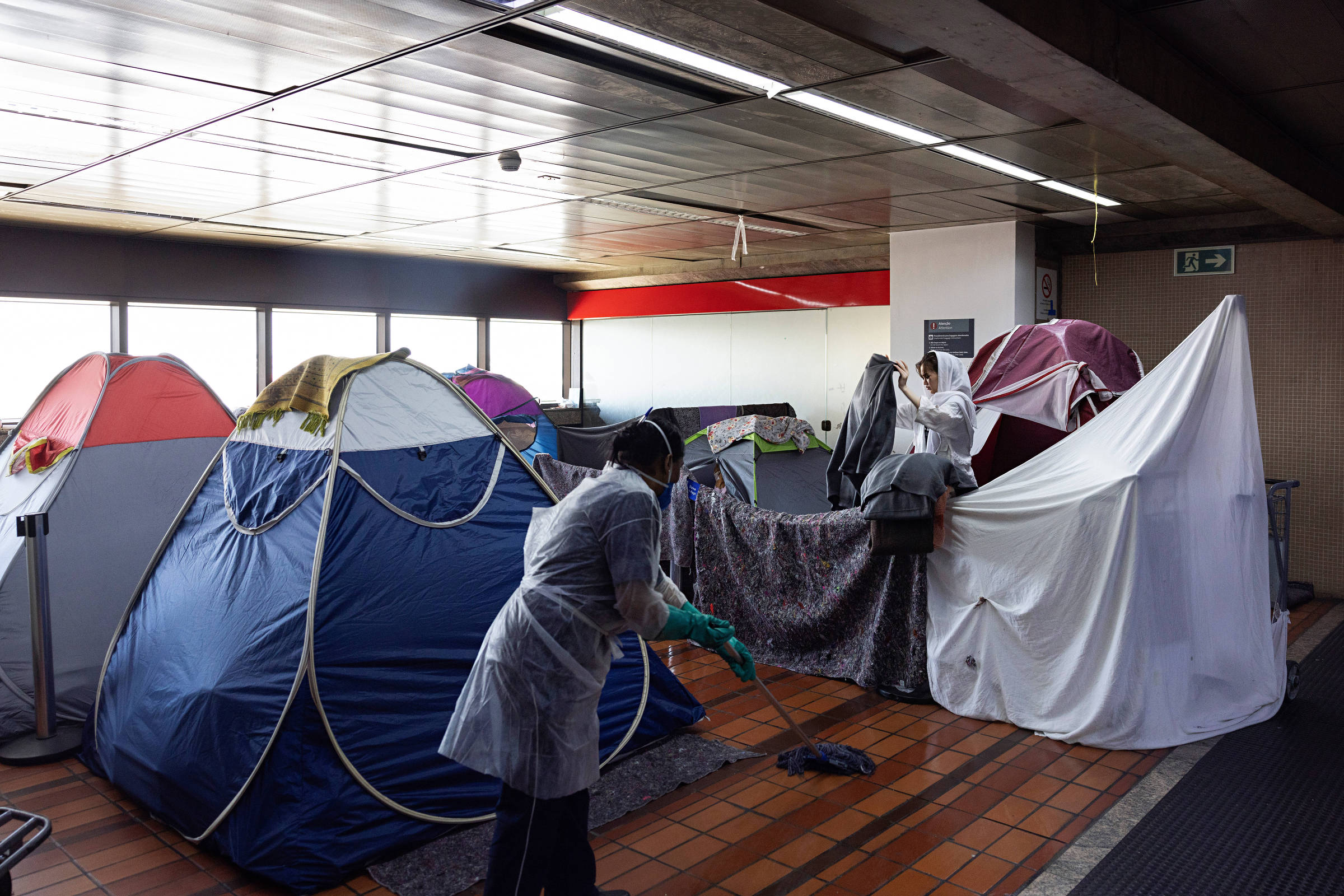
Coyotes take advantage of the country’s ‘open-door’ immigration policy to guide immigrants on the route to the Darién jungle
Nationalities differ, as do age, motivation, and mother tongue. In common, they have just crossed the “jungle of death” between Colombia and Panama and have begun their long journey through South America from Brazil.
Immigrants from Africa, Asia, and the Caribbean have been arriving in increasing numbers through the country, by land and air. Instructed by coyote networks, they take advantage of Brazil’s “open-door” immigration policy to enter the continent and, by land, reach the US-Mexico border. However, in the middle of the journey lies Darién.
In a simple wooden construction in the narrow corridor leading to the Lajas Blancas Immigration Reception Station, one of the main shelters for newly arrived migrants from the forest, Cuban Rossidelyn Hernández Zulueta, 26, works amidst the smell of roasted chicken, among coolers of water and soda.
In a way, she was lucky: only 24 hours there, she got a job in a local resident’s business for US$20 (R$100) a day. The idea is to save US$80 (R$400) so she and her husband can take the bus that crosses Panama from east to west and will take them to Costa Rica.
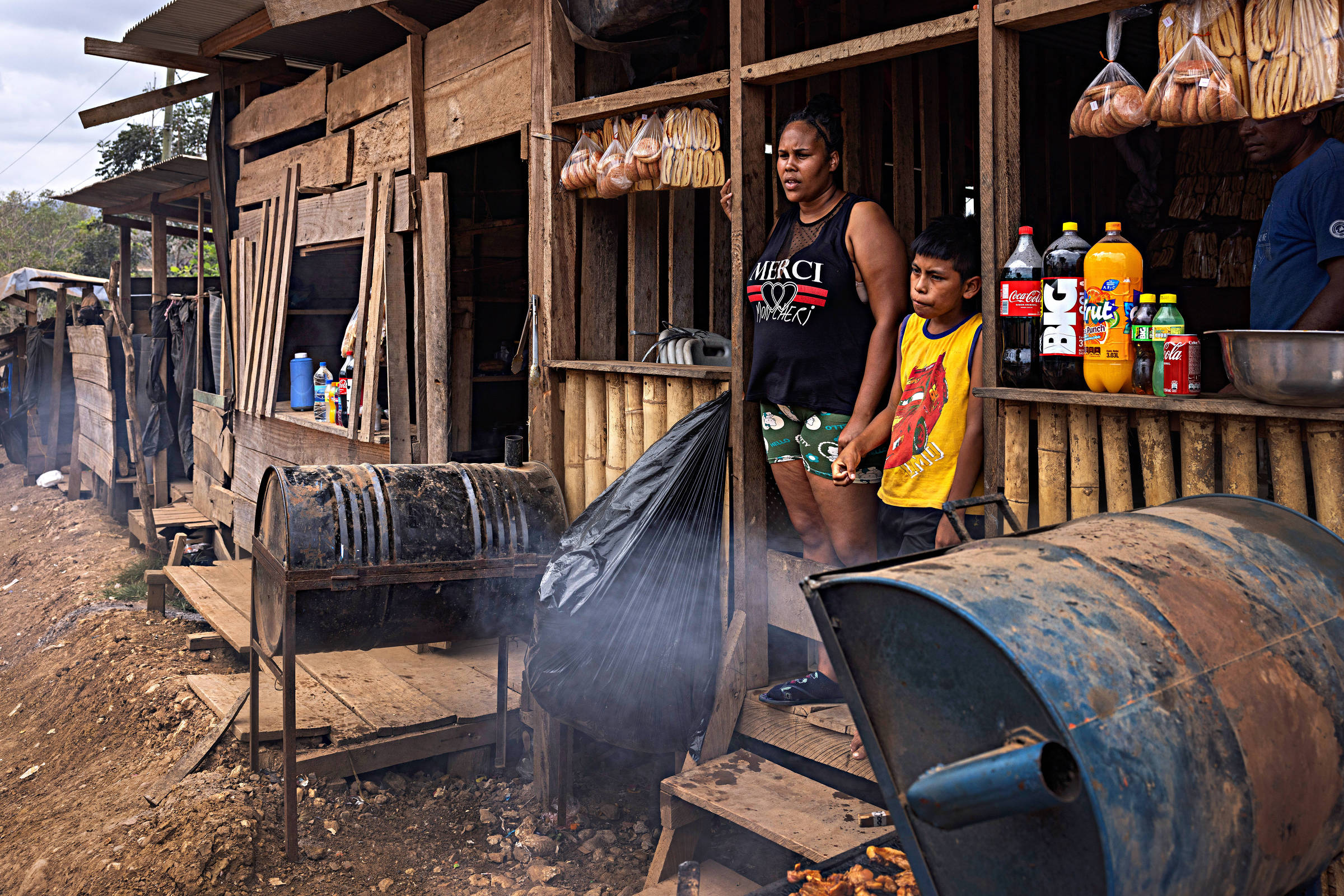
Rossidelyn Hernández Zulueta, a 26-year-old Cuban who got a temporary job at a small restaurant in front of the Lajas Blancas Immigration Reception Station - Lalo de Almeida/Folhapress
At that point, Rossidelyn was on her 26th day of the journey, which began in Curitiba. But the journey had started long before, in May 2023. That month, the Cuban couple, parents of two “varones” aged 7 and 9 who stayed under the care of their maternal grandmother, left Cuba for Guyana.
There, they were told by coyotes that if they paid US$800 (R$4,000), they could be taken to Boa Vista and apply for asylum in Brazilian territory. That’s what they did. In Brazil, they received temporary residence, allowing them to stay in the country for two years. From Boa Vista, also with the help of intermediaries, they went to Curitiba, where they worked for eight months to save more money.
Rossidelyn worked in steakhouses, beauty product factories, and an Amazon distributor. Until, on January 7th of this year, she decided it was time to leave.
She recalls her journey through South America listing the cities without hesitation. From Curitiba, she flew to Boa Vista. From there, by land to Pacaraima, on the border with
Venezuela. Then, she traveled through Santa Elena de Uairén, Ciudad Bolívar, and Puerto Ayacucho to Colombia, where she passed through Puerto Carreño, Villavicencio, Bogotá, Medellín, and finally, the coastal Turbo, on the Caribbean Sea. She took a boat, crossed the Gulf of Urabá, and finally arrived in Necoclí, the gateway to the jungle.
“I saw two dead people, smelled the odor, and was sure there were other corpses, but I didn’t look around to avoid falling. I walked focused on surviving,” she says about the crossing in Darién.
Rossidelyn is one of nearly 11,500 Cubans who sought refuge in Brazilian territory last year-twice as many as in 2022. Only Venezuelans made more such requests in 2023 (29,400). Then came the Angolans (3,900), who also follow the South American route to the Panamanian jungle.
That’s the case for Armando, 32. Born in Luanda, a few months ago he lived in República, in downtown São Paulo, with his wife, Júlia, 28, and their son, Enrique, 8. They managed to overcome the forest with Júlia four months pregnant and disembarked from a canoe at the immigration station under the supervision of members of Senafront, the National Border Service, dressed in olive-green clothing.
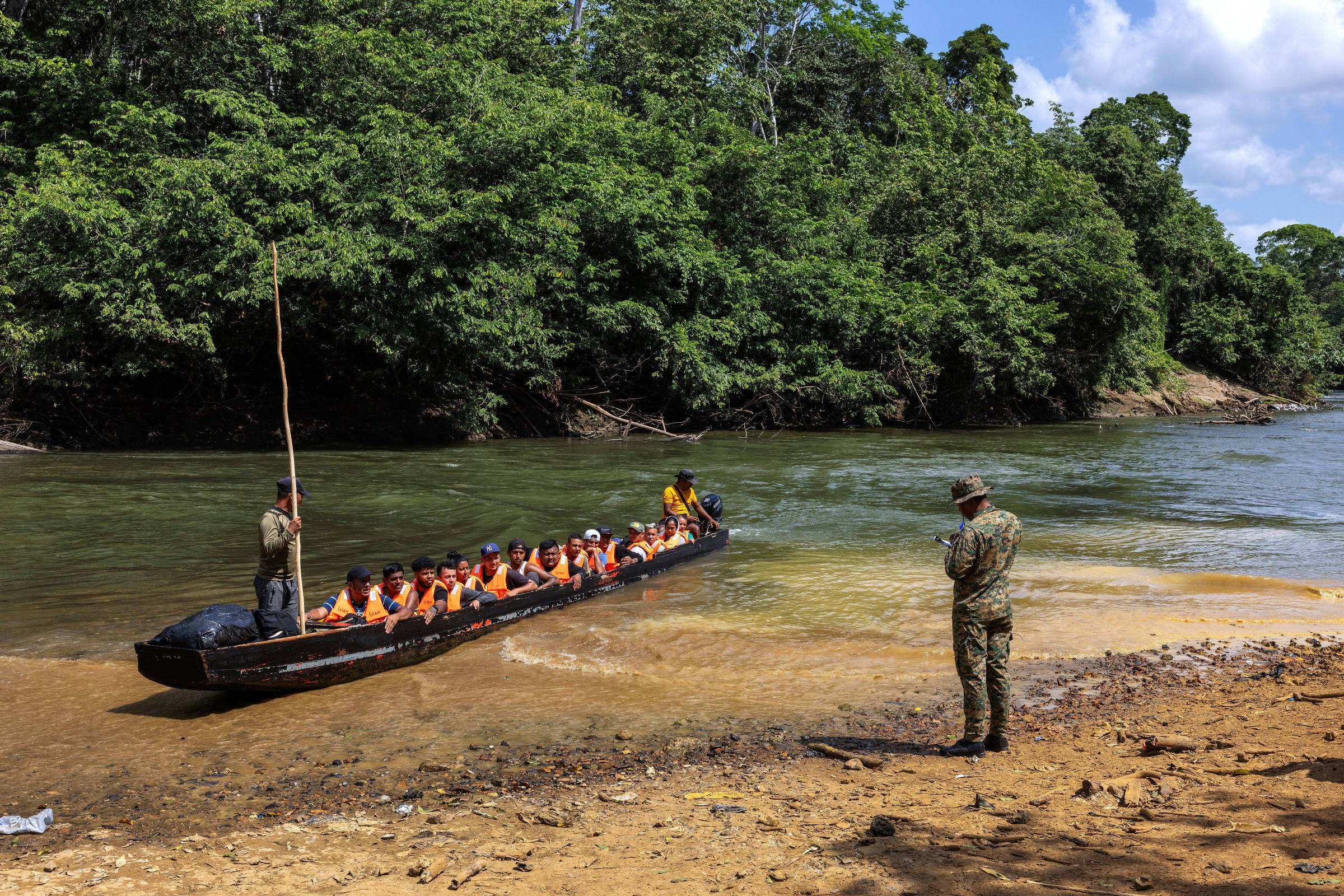
An agent from the Panama National Border Service controls the arrival of canoes carrying immigrants to the migration station - Lalo de Almeida/Folhapress
And why Brazil? “It’s easier to get a visa,” says Armando, who worked as a janitor. “It’s very good to live here, but the salary was low. You know: when we leave Africa, it’s to help the family, so it’s hard.”
As the first stop on the journey to the USA, Guarulhos has seen the arrival of immigrants from increasingly distant places. Among them, Nepalese, Vietnamese, Bengalis, Somalis, and, in a very particular context, Afghans.
They flee the fundamentalist and oppressive regime of the Taliban and arrive with a humanitarian visa granted by Brazil. For two years now, dozens-or hundreds-of them have been seen in makeshift tents at Terminal 2, awaiting a spot in shelters.
Our reporters were at the site a week before and a week after going to Darién and found the same families awaiting the opening of a reception house in Greater São Paulo with 150 vacancies-the place was supposed to have been inaugurated by the state government in January.
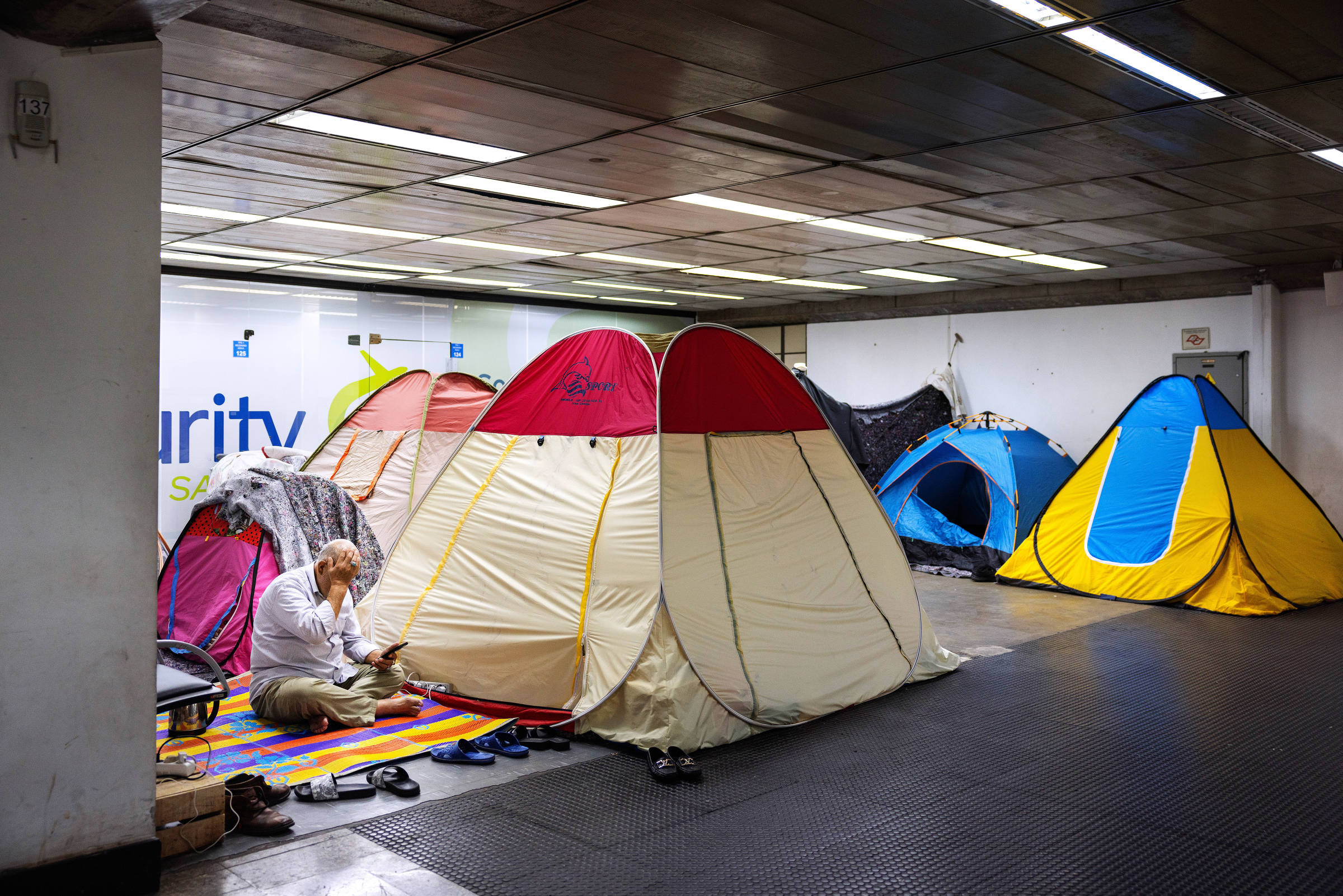
Afghans camped in Terminal 2 of Guarulhos Airport wait to be transferred to a shelter - Lalo de Almeida/Folhapress
One of these families is M.‘s, a former infrastructure chief of the Ministry of Finance of Afghanistan, and his wife, the gynecologist G., who prefer not to expose their names. Accompanied by their two young children, they had been living in a makeshift tent with blankets at the airport for over a month.
The couple does not see Darién as a possibility and wants to stay in Brazil but says they understand the decision of compatriots to continue the journey, often instigated by coyotes who operate on social networks and at the terminal itself.
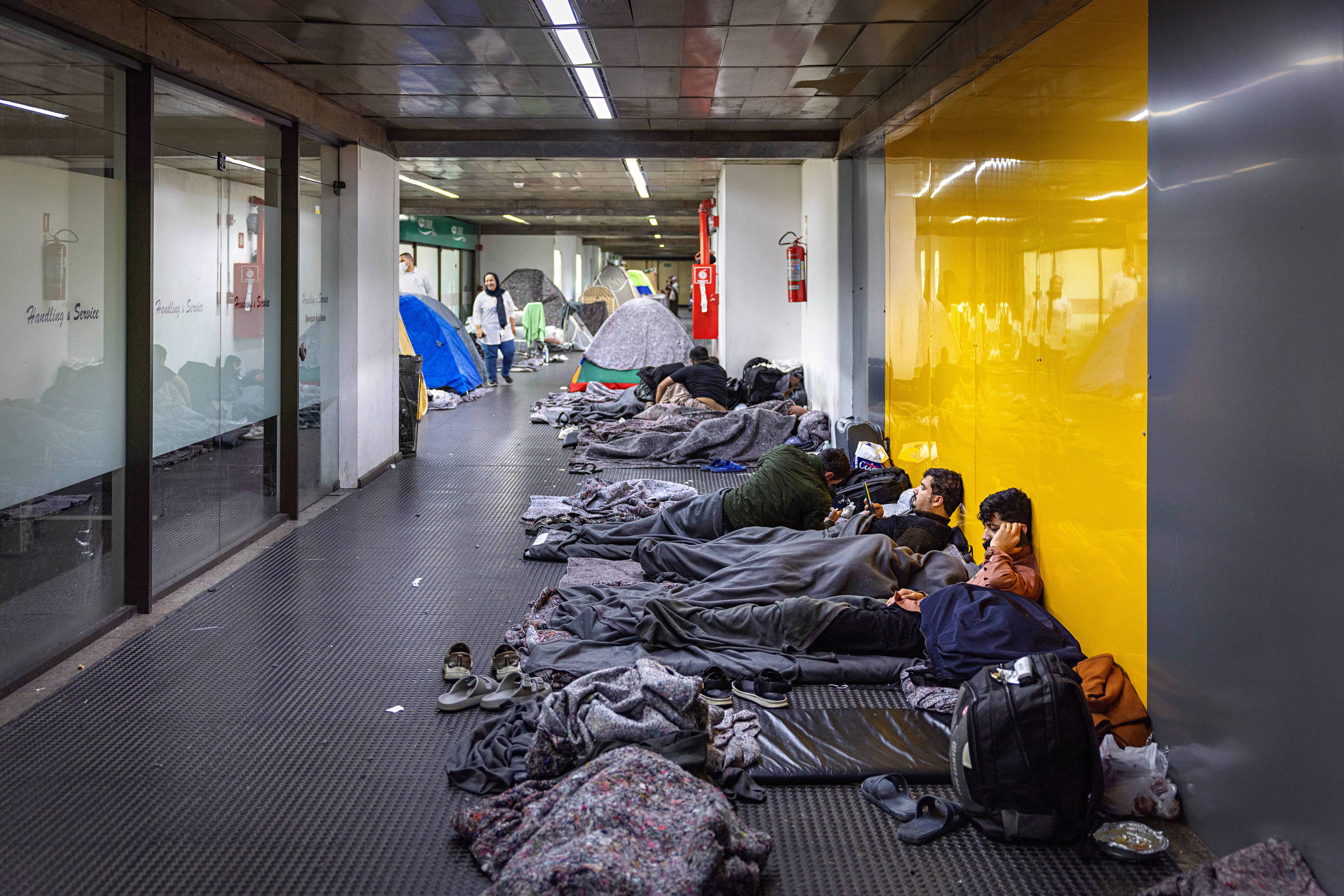
Afghans camped in Terminal 2 of Guarulhos Airport - Lalo de Almeida/Folhapress
On the other end of the journey, at the San Vicente Immigration Reception Station, Yasmin, the only one in the family fluent in English, helps her mother, father, and three brothers communicate.
The 21-year-old Afghan was studying journalism at Kabul University but had to leave the course after the return of the Taliban, who banned female education. Her younger sister, now 18, also couldn’t finish school. The family was in Iran until they received a signal for a reception visa in Brazil. “In addition to restrictions on women, everything is more difficult for the Hazaras,” says Yasmin. Of Mongolian origin, the ethnicity to which her family belongs is considered the most discriminated against by the fundamentalist group.
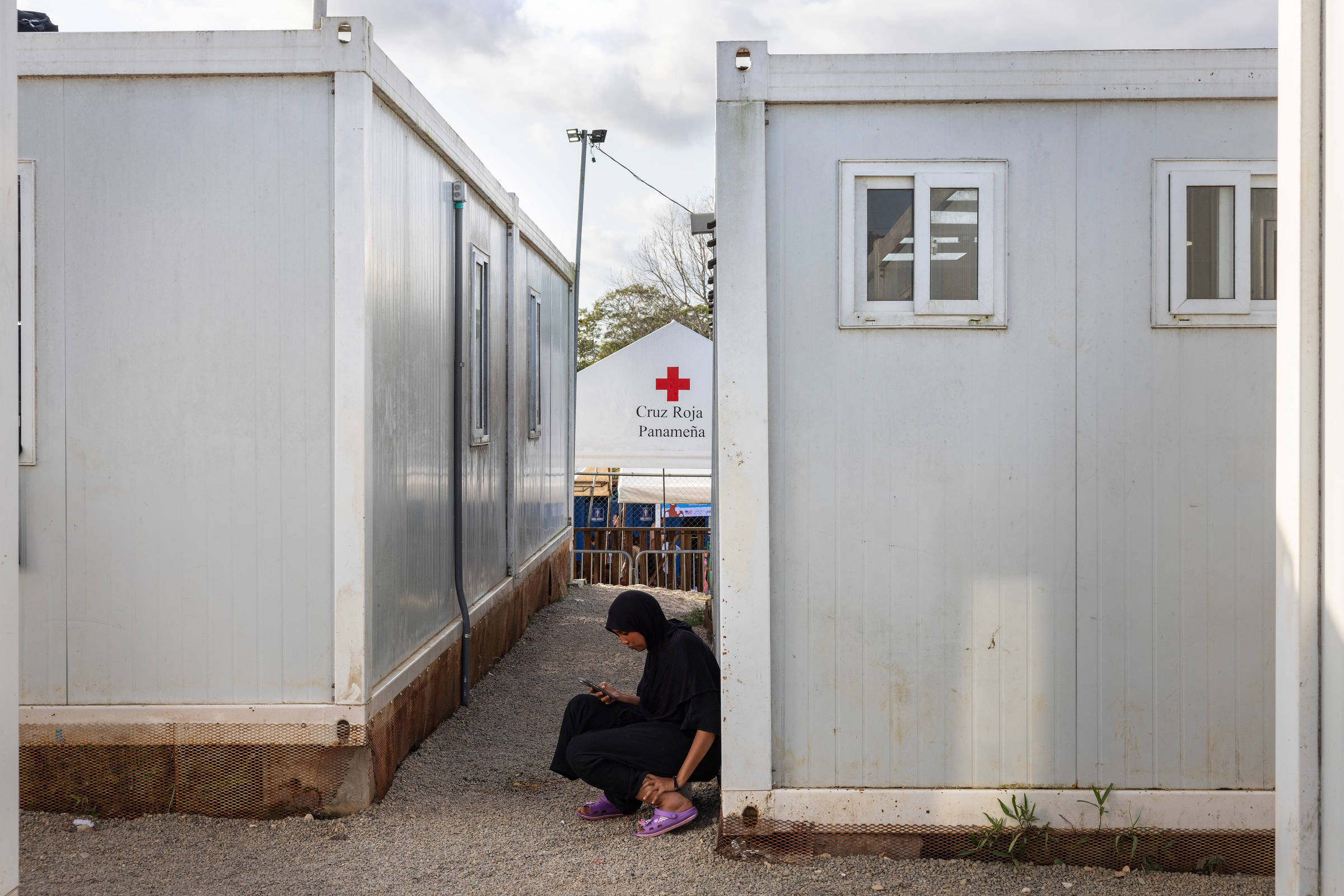
A Somali migrant using a cell phone while sitting among shelters at the San Vicente Immigration Reception Station - Lalo de Almeida/Folhapress
From September 2021-one month after the Taliban took Kabul-to October 2023, Brazil issued about 10,000 humanitarian reception visas for Afghans. The granting policy has been frozen while the model is updated by the federal government, still without a date for resumption.
The enormous variety of nationalities seeking the “jungle of death” has put the Panamanian state on alert. Immigration stations now perform biometrics on those from some countries to find out if they are not fleeing conviction in their home country.
According to local authorities, from 2013 to 2023, at least 156 immigrants who crossed Darién were arrested for terrorism, drug trafficking, or ideological falsehood. Another 256 were detained for other criminal records, such as domestic violence or theft. Most were Afghans, Somalis, and Colombians.
As part of this machinery, Brazil also finds itself needing to combat crimes. “The country has become a route for migrant smuggling. There are local networks and international organizations profiting from this,” says Marina Bernardes, general coordinator for combating these groups at the Ministry of Justice and Public Security.
Repressive measures, however, are still almost taboo for the Brazilian government and humanitarian organizations, as there is fear of criminalizing or punishing immigrants in one of the few countries globally praised for its immigration policy.
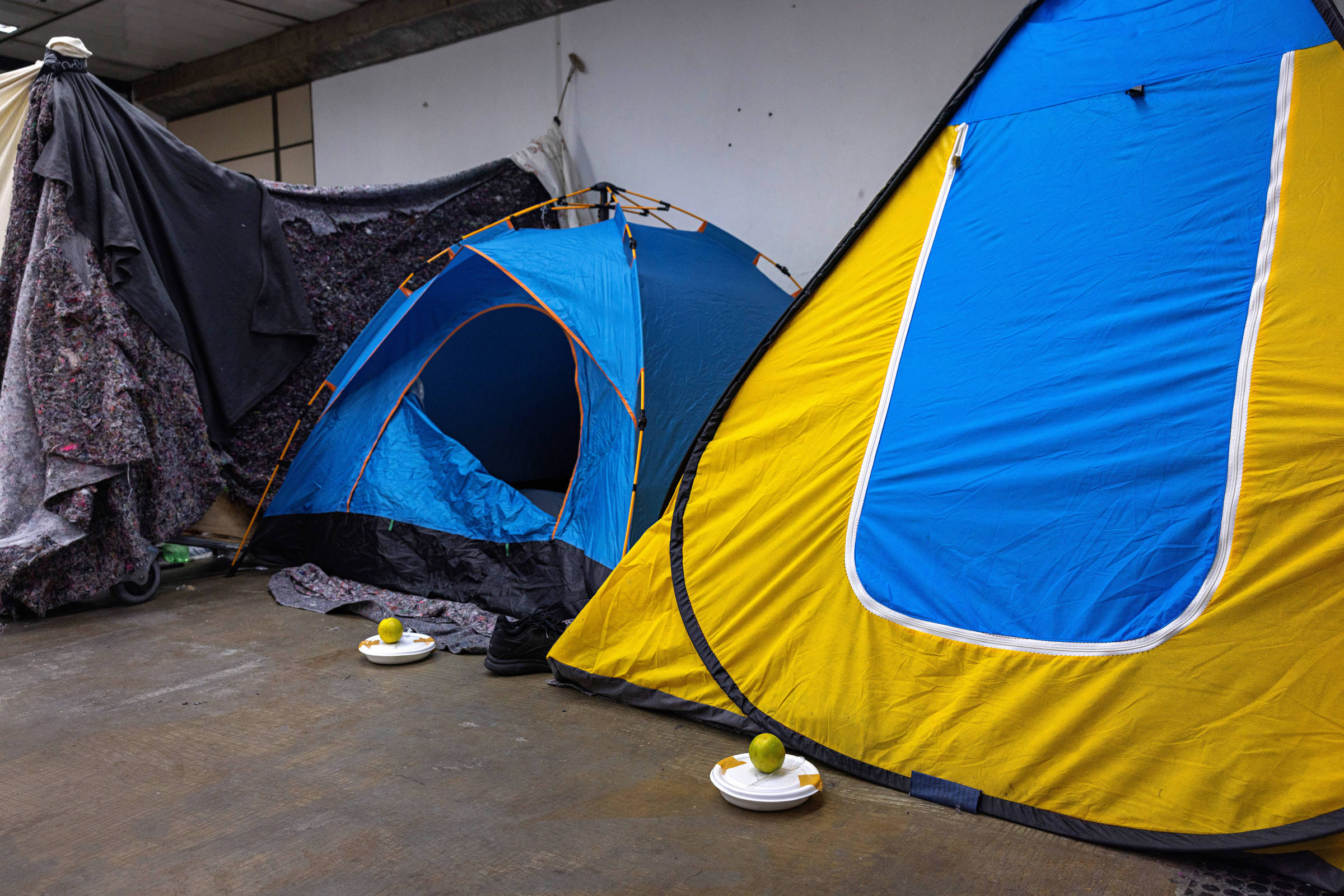
Meals distributed by the Guarulhos City Hall for Afghan migrants camped in Terminal 2 of the airport - Lalo de Almeida/Folhapress